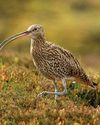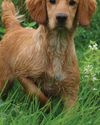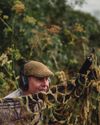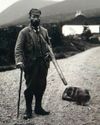
Most edible mushrooms, indeed most larger fungi, appear during the late summer and throughout autumn. But a handful encourage our hopes by growing in spring: the morel, the black morel and the St George’s mushroom. None are particularly common, though the black morel has become considerably more so since the late 1980s, when it found a new and agreeable home in the wood chips used to mulch shrubberies.
The St George’s mushroom is a species of permanent grassland, so old pasture, wood and grassy path edges, roadsides, parks and domestic lawns are the places to look. Not that actively looking helps much. Like most fungi, you simply come across them. Unfortunately, this mushroom is much rarer than it once was as permanent pasture loss has been regrettably rapid and extensive over the past few decades.
Everyone who wishes to collect wild mushrooms for the table worries — indeed, should worry — about poisoning themselves. As one 19th century writer said: “A promiscuous consignment of various descriptions of fungi to the cook cannot be too strongly deprecated.”
St George’s mushroom, from William Hamilton Gibson’s Our Edible Toadstools and Mushrooms
But there is little risk with St George’s mushrooms as it is the only large grassland species you are likely to encounter in spring.
If that is not enough, it is easily identified from physical characteristics. The entire fungus is a progressively grubby white/cream. It can grow to 12cm or more in diameter and is generally the shape of the cultivated mushroom, but with a thicker stem. It is robust and firm of flesh. The smell it produces is very strong: farinaceous, referring to the smell of flour or meal, from the Latin farina. Raw pastry may be a better allusion. It almost invariably grows in fairy rings. In short, St George’s mushroom is one of the easiest of all the fungi to identify.
This story is from the April 01, 2020 edition of Shooting Times & Country.
Start your 7-day Magzter GOLD free trial to access thousands of curated premium stories, and 8,500+ magazines and newspapers.
Already a subscriber ? Sign In
This story is from the April 01, 2020 edition of Shooting Times & Country.
Start your 7-day Magzter GOLD free trial to access thousands of curated premium stories, and 8,500+ magazines and newspapers.
Already a subscriber? Sign In

United we stand
Following United Utilities' decision to end grouse shooting on its land, Lindsay Waddell asks what will happen if we ignore our vital moors

Serious matters
An old gamebook prompts a contemplation on punt-gunning

They're not always as easy as they seem
While coneys of the furry variety don't pose a problem for Blue Zulu, he's left frustrated once again by bolting bunnies of the clay sort

Debutant gundogs
There's lots to think about when it comes to making the decision about when to introduce your dog to shooting

When the going gets rough
Al Gabriel returns to the West London Shooting School to brush up on his rough shooting technique

The Field Guide To British Deer - BDS 60th Anniversary Edition
In this excerpt from the 60th anniversary edition of the BDS's Field Guide To British Deer, Charles Smith-Jones considers the noise they make

A step too far?
Simon Garnham wonders whether a new dog, a new gun and two different fields in need of protection might have been asking too much for one afternoon's work

Two bucks before breakfast
A journey from old South London to rural Hertfordshire to stalk muntjac suggests that the two aren't as far detached as they might seem

Stalking Diary
Stalkers can be a sentimental bunch, and they often carry a huge attachment to their hill

Gamekeeper
Alan Edwards believes unique, private experiences can help keepers become more competent and passionate custodians of the countryside